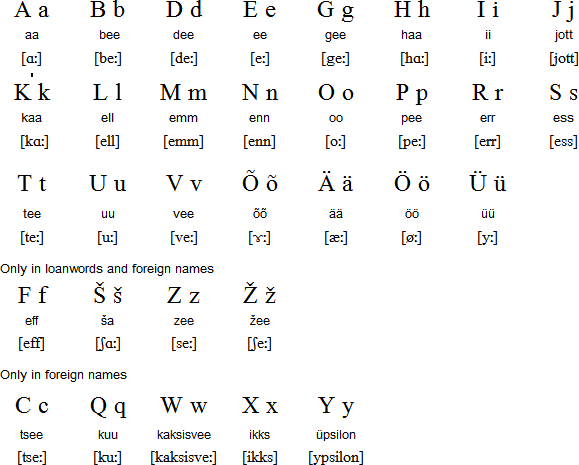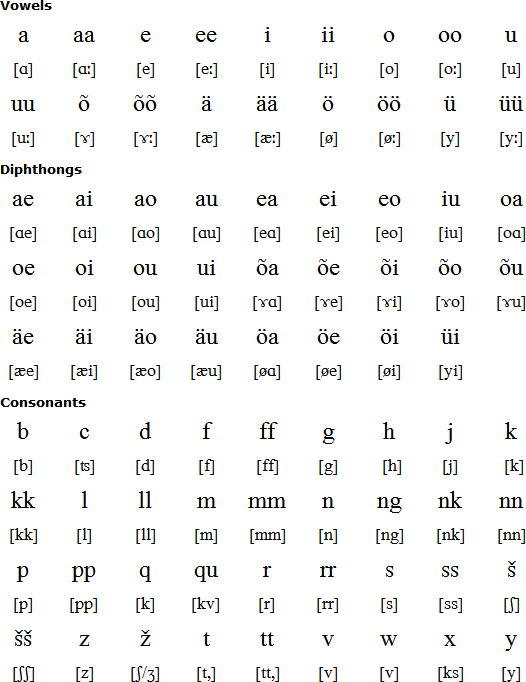Estonian (eesti keel)
Estonian is a Finnic language closely related to Finnish spoken by about 1.1 million people in Estonia. The main difference between Estonian and Finnish is that Finnish has a lot of loan words from Swedish, while Estonian contains many words of German origin, plus some words from Russian, Latin, Greek and English. There is considerable mutual intelligibility between Estonian and Finnish.
Estonian has two groups of dialects: northern and southern. The northern dialects are associated with the city of Tallinn, and the southern ones with Tartu. Standard Estonian is based on the northern dialects. The southern dialects are sometimes considered separate languages.
Estonian was the state language of Estonia from 1919 to 1945. During the Soviet period Estonian was one of the the official languages, along with Russian, and most Estonians became bilingual in Estonian and Russian. Non-Estonians had to learn Estonian in school, however many considered learning the language unnecessary. After the collapse of the Soviet Union in 1989 Estonian became the state language once more, and Russian was discouraged.
The oldest examples of written Estonian are names, words, and phrases found in early 13th century chronicles. The earliest surviving longer text dates from the 16th century. An Estonian textbook first appeared in 1637. Ferdinand Johann Wiedemann published the comprehensive Estonian-German dictionary in 1869, and a grammar describing the Estonian language in 1875. Most Estonian literature has been produced since the ealy 19th century, and particularly in the early 20th century.
When Estonian was first written there was no standard alphabet. People used an ad hoc orthography based on Latin and Middle Low German. In the 17th Bengt Gottfried Forselius and Johann Hornung created an orthography for Estonian based on German. That was replaced by a Finnish-based orthography, known as the Newer Orthography, created by Eduard Ahrens in the second half of the 19th century, and this was the basis for the current orthography.
Estonian alphabet (eesti keele tähestik)

Estonian pronunciation

Notes
- Stress almost always falls on the first syllable of words. but quite a few words of foreign origin and a few native Estonian words, such as aitäh, don't follow this pattern.
- Vowels and consonants can be short (written with one letter), long or extra long (written with two or three letters).
- The letter y is also called igrek.
- The letters f, š, z and ž are only used in words of foreign origin.
- The letters c, q, w, x and y are used in personal names, placenames and foreign words.







